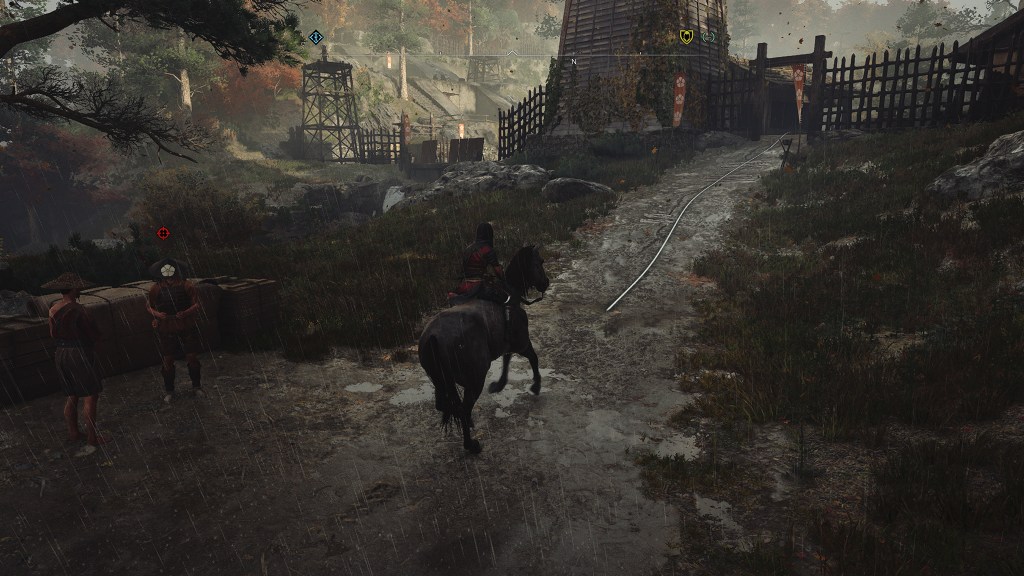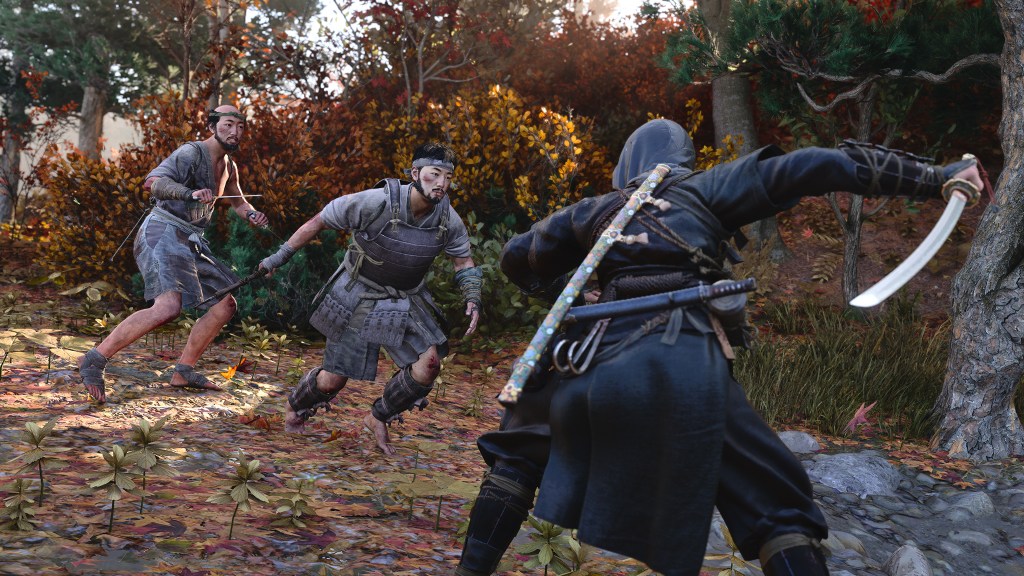Assassin’s Creed players have anxiously anticipated the series’ take on Japan ever since its inception. The Assassins are already basically ninjas, so Japan was a natural fit. Assassin’s Creed Shadows was finally the game to take the franchise into the Land of the Rising Sun, giving players the ability to wield both a hidden blade and a katana. But it’s unfortunately one of the worst-realized settings Assassin’s Creed has had thus far.
Videos by ComicBook.com
Shadows’ Japan falls short because of how shoddily it is laid out. 16th century Japan is awash with trees, mountains, trees, a few cities, and even more trees. Its complexity is obviously limited a little by the time period, but Shadows’ Japan is stuffed with an absurd amount of the tall wooden plants to the point where it’s filler that drowns out everything else. Going off-roading is an exercise in tedium since the sheer density of shrubbery makes it almost impossible to see Naoe if it weren’t for the white outline that highlights her in certain scenarios. It’s even worse when she’s repeatedly sliding down small inclines that are also similarly hidden. The misery is mostly relegated to Naoe since Yasuke and the horse are too unwieldy to haphazardly traverse this terrible terrain.

The density is also a huge problem when zooming out because of how it deflates the sightlines. Climbing up one of the many synchronization points and participating in the age-old tradition of watching the camera pan around the scenery is silly because most of the horizon is usually mostly trees. The reward for all that climbing should be a spectacle and a demonstration of the game’s technical chops and not a repetitive, lifelessly designed landscape.
Hiding everything behind greenery is also a multifaceted problem. Not only does it physically obfuscate many of the structures hidden around, it also severely limits what’s actually explorable. In Elden Ring and The Legend of Zelda: Breath of the Wild, it is up to the player to decide what looks intriguing. BOTW director Hidemaro Fujibayashi explained at CEDEC 2017 (as translated by Camouflaj’s Matt Walker) that the studio used the “Triangle Rule” to get players to explore. Triangular mountains and rocks always hide parts of the world but gradually reveal what’s behind them as players start climbing or move laterally around the structure’s base. This creates a constant source of surprises that subtly guide players around through their own curiosity.
RELATED: How Assassin’s Creed Shadows Still Trails Behind Ghost of Tsushima
Elden Ring director Hidetaka Miyazaki has specifically called on BOTW as an influence and repeatedly has spoken about how FromSoftware’s 2022 hit was designed to encourage exploration. He said the team wanted to prioritize the “level of player freedom more than anything” and noted that players should “actually be able to go over and explore” interesting landmarks. The glowing Erdtrees themselves are the most obvious example of this, but the Lands Between is littered with unique buildings that beg to be pilfered through. These beloved worlds are designed in ways to catch the player’s eye.

Shadows is the polar opposite. It’s often difficult to see anything through the foliage, and Shadows, much like every other Ubisoft game, directly tells players what is worth exploring through the question mark icons. There’s almost no point going to anything Ubisoft doesn’t specifically call out as important; many of these unmarked places don’t even have a loot chest with a mediocre helmet and some linens acting as a meager consolation prize.
Creative director Jonathan Dumont stated that the team wanted players to be looking at the world “instead of following a marker,” but that is absolutely not the kind of game this is. It still falls under the derogatory label of “Ubisoft open-world game” and misunderstands what true exploration is. Exploration is naturally being guided between points while getting occasionally distracted and not looking at the map in the pause menu to try and find the castle west of the rice paddies in Izumi Settsu. One gets you to look at the world while playing, and the other gets you to look at the map in the pause menu.
Bland, dated world design like this doesn’t let players immerse themselves in the setting and makes the whole feel like a facade or theme park replica of a real place. There’s no way to stumble upon anything of note or be surprised. Vistas are unimpressive and iconic Japanese landmarks are spread so thin across its overly large landmass. A heat map of active areas would leave most of the world in a cold blue hue with small red lines going from question mark icon to question mark icon.

All of this filler is seemingly not lost on Ubisoft, either. In its official video about the open world, it tells players that Japan is “vast with many steep, unclimbable mountains” and advises them to “stay on the road as much as possible.” If so much of this game is not made for players to run through and they’re encouraged by the team and GPS-like pathfinder mode to stay on the roads, then what’s the point of most of the map? Ubisoft has made this even more mindless with the most recent patch since turning on the pathfinder mode now makes your horse run to the nearest objective after a button press.
Getting through Shadows’ Feudal Japan is either thoughtless or unengaging, and that’s not helped by how dead the world is and how little you interact with it. Strolls between the Ubisoft-designated points of interest are almost utterly devoid of anything of note. The animals aren’t much more than window dressing since they don’t do much other than run away. Players can draw them but only certain animals at certain points when Ubisoft deems it necessary; having a more organic, player-driven drawing system is out of the question.

Random events that would give everything more life are almost entirely absent. Bandits sometimes squabble with guards but anything more complex than that, for the most part, does not exist. There are no items to forage for in the wild or animals to hunt, so there’s no mechanical way to tie players to the environment. The crafting and weapon degradation systems in Breath of the Wild and Tears of the Kingdom are as prominent as they are to tie players to the world and systematically make them invest in exploration. It’s a mix of intrinsic and extrinsic motivation.
Shadows has nothing of the sort — going up and pressing the interaction button on a few shrines or looking for lost scrolls in a temple is a shallow attempt to get players to engage with their surroundings. And with a much smaller variety of missions that only seem to focus on assassinations and conquering castles, Shadows just seems more hollow than the last few entries. Ubisoft has pulled away from the icon barrage of past games but didn’t put anything in its place. The checklist game isn’t completely without value — games like Horizon Forbidden West and Ghost of Tsushima proved that — yet it’s hard to accept when they’re done like this so long after the genre has evolved.
Assassin’s Creed 3 creative director Alex Hutchinson once called Japan one of the most boring settings a player could ask for. He clarified his statement a decade later saying Japan isn’t inherently bad, but the “magic” of the series was placing it in lesser-known periods and locations. Regardless, Hutchinson was proven right but for different reasons. Ubisoft made Japan bland in Assassin’s Creed Shadows by failing to craft a vibrant world worth investigating and filling it with too many unnavigable hills and overly dense forests. It can be beautiful, but it’s a boring nightmare to traverse. Assassin’s Creed deserves better and so does Japan.








